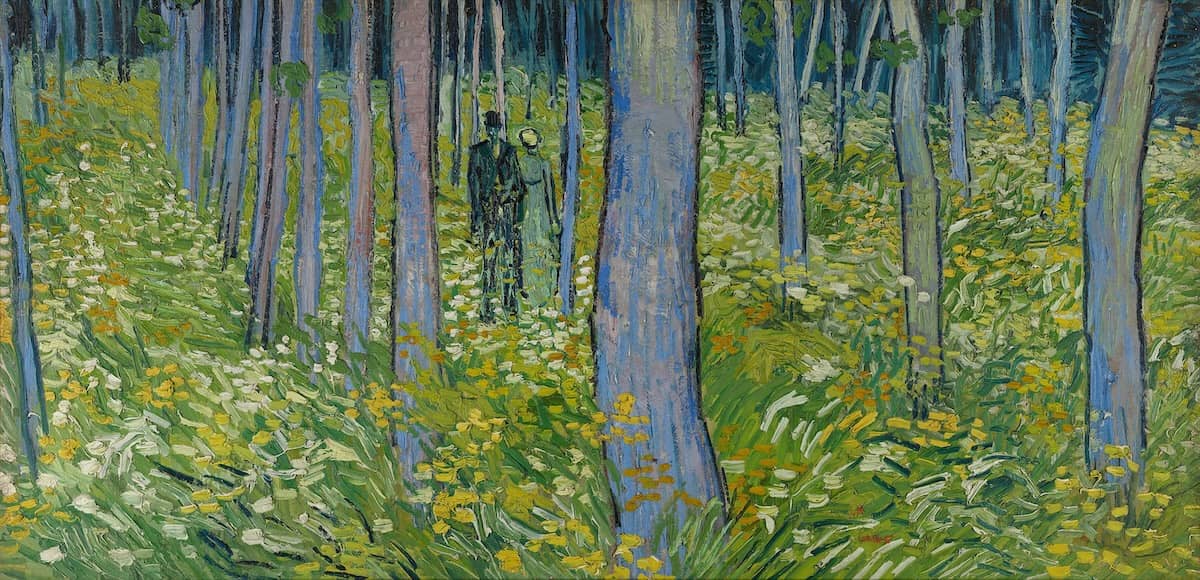Forest Interio, 1890 by Vincent Van Gogh

Arbitrarily eliminating the horizontal aspect of his landscape, Van Gogh brutally breaks the harmony of nature. And he transforms the traditional concept of the tree. No longer is the forest a cathedral, a slender vault, but a prison. The artist dismisses the logical response to the landscape and retains merely what corresponds to his obsessions. Here, where we see a forest interior, he sees an accumulation of bars that separate a couple from the rest of mankind, just as the tight grill of his cell window separates him from the living. As for these ectoplasmic beings who wander among the trees, half effaced somewhat like Giacometti's figures, Van Gogh indicates to us chiefly the distance, all that separates them and all that separates us from them.
Forest Interio is a painting by a sick man. The artist is struggling against the illness which gradually gains the upper hand over him. "Every day I take the remedy which the incomparable Dickens prescribed against suicide," wrote Van Gogh in April, 1889. "This consisted of a glass of wine, a piece of bread and cheese, and a pipe of tobacco."
After reading the sole - enthusiastic - article on him written during his lifetime, he begged his brother Theo,
Please inform Monsieur Aurier not to write further articles on my painting, tell him firmly that first of all, he is wrong about me, and secondly, that I am too filled with sorrow to give way to publicity. Painting pictures distract me, but if I hear mention of this, it makes me more sorrowful than he imagines."




















